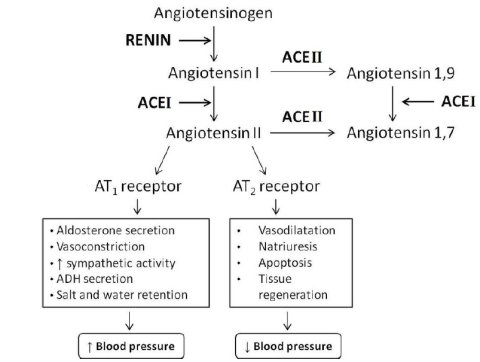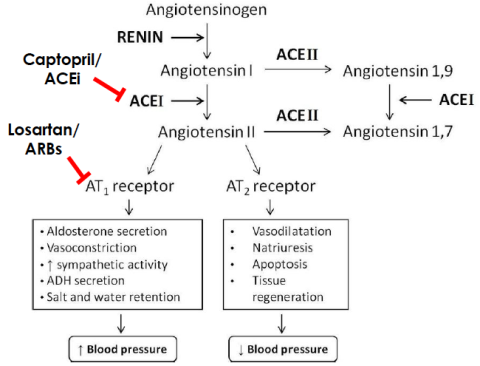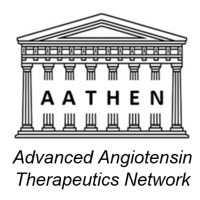Renin-angiotensin-aldosterone system (RAAS) is a vital system of human body, as it maintains plasma sodium concentration, arterial blood pressure and extracellular volume. Kidney-secreted renin enzyme acts on its substrate to form angiotensin II, a versatile effector peptide hormone.
Before talking about ARBs, let's have a briefly review how the Renin-Angiotensin-Aldosterone system works when activated by Angiotensinogen:

Since we discovered the functioning of this biological system, and its responsability in certain pathologies, drugs have been discovered to treat these cardiovascular disease such as ACEs (Captopril...) or ARBs (Losartan...)

We discovered that in addition to blocking AngII-AT1R signaling, ARBS:
- reduce oxidative stress
- Induce a switch towards protective AT2R
- Inverse agonist
- Mimic Ang1-7 - MasR
- Activate a new receptor.
So we have simply defined what a candidate of AATHEN is :

If optimized for these indications, the untapped potential of ARBs may be of significant value to the population and a fertile ground for innovation. We and others have provided evidence that some ARBs are in fact highly pleiotropic and capable of major off-target effects. Structurally, all ARBs share a highly homogenous chemical backbone derived from the 4 Cterminus amino acids of angiotensin II, which may explain their shared pleiotropic properties. As an example, we recently published that losartan and valsartan have similar effects on blood vessels as aerobic exercise independently of the angiotensin II receptor AT1R and even at sub-blood pressure (BP) lowering doses, which may explain their broad therapeutic effects.
-
We therefore have synthesized a Losartan analogue that no longer blocks AngII/AT1R signaling but has gained in vasoactive efficacy and potency : new class of experimental drugs?
-
We have identified 92 plasma biomarkers of ARB pleiotropism. Why?
-
ARB 2.0: 2nd generation AT1R-blocking ARB analogues optimized for your new indication


